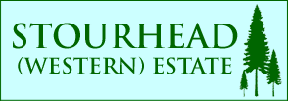Penridge wild flower scheme: for bees, butterflies and birds

Bees and pollinating insects are in trouble across Britain's countryside, due to the loss of wild flowers. This woodland and its grassy rides were planted about 20 years ago, but wild flowers characteristic of established woodland will not find their way here without help. For this reason, the Estate has decided to give them a helping hand, and with advice from a qualified ecologist, has put together a plan to introduce lots of wild flowers that are typical to this part of Somerset. The Estate is doing this at its own cost because the owners are committed to improving wildlife on the land. Work on this project began in March 2014.
While the wild flower areas are being established we would be grateful for your help in respecting any temporary structures and signs we need to erect. Normal permissive access will not be restricted.
Horse riders: it would be appreciated if you would avoid riding on the treated areas of the grass rides, as we do not wish this area disturbed while being prepared and immediately after seed sowing.
This is what we are going to do:
Establish flower rich grassland along the sunniest parts of the grass rides.
Currently the grassland here is lacking wild flowers and was sown with a standard agricultural grass. We intend to sow a mix of native wild flowers and grasses along a narrow strip in the main north-south ride, and in two wider zones on the south side of the woodland.
To do this we must:
- Mark the areas with canes, so the contractor knows which areas to treat
- Use a herbicide (Roundup) to kill the existing grass. This will be done in early Spring. Once dry, the sprayed area will be safe for walkers and animals.
- Later in the year we will need to do a second spray to kill off any weeds, such as docks, that will germinate from the soil seed bank.
- In late summer/early Autumn the treated areas will be sown with a mix of British native meadow wild flowers and grasses, and woodland edge wild flower species. We will also plant lots of Wild Daffodil bulbs and sow Wild Bluebell seed. We will mark off the sown areas and request riders avoid them.
- Next spring we will introduce more wild flowers using plug plants in selected areas.
- Once established, the wild flower meadow areas will be managed by mowing in late Spring and late summer, when they will be mown for hay. The flowers will be allowed to grow up and the treated areas of the grassland will be left unmown for most of the spring and summer.
Plant more flowering shrubs and allow some bramble to grow up on the woodland edge
We will aim to provide a better woodland-edge habitat, using native shrubs and by encouraging some bramble. This will encourage insects and other bugs that will also improve the area for birdlife. Among the shrubs we will introduce will be Wild Honeysuckle and Dog Rose.
Improve the boundary hedge for wildlife

We will stop cutting the hedge every year and let it grow taller and wider. We may plant more flowering shrubs alongside it and are considering introducing woodland wild flowers into the base.
Introduce woodland wild flowers into the established woodland
We have already introduced some woodland wild flowers, such as Wild Bluebell and Primrose, into small areas and are planning to introduce more in the future.
The work we are doing here will help wildlife but will also make the area more interesting and attractive for people who visit.










